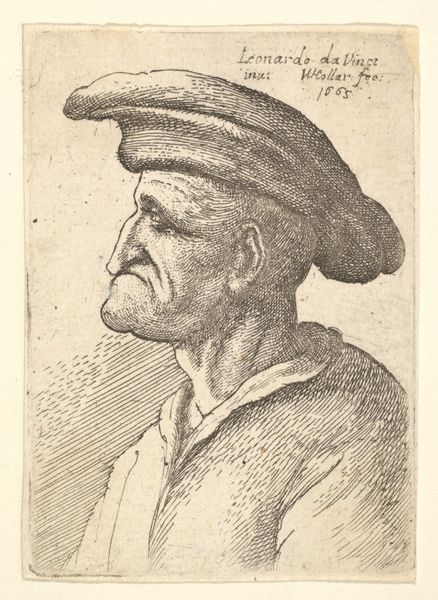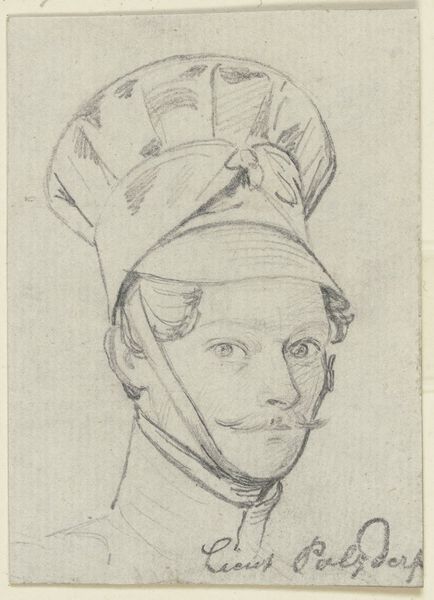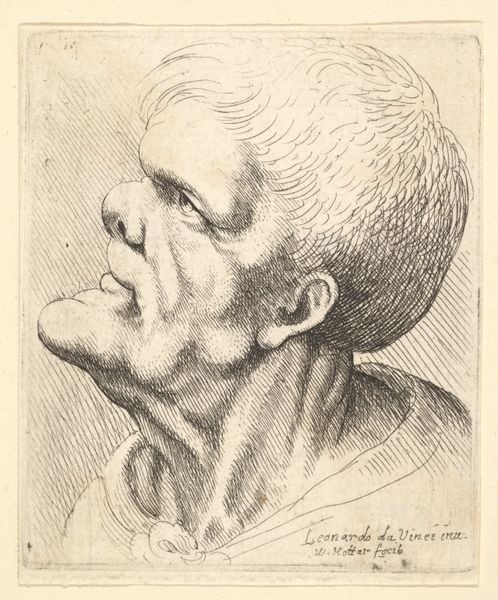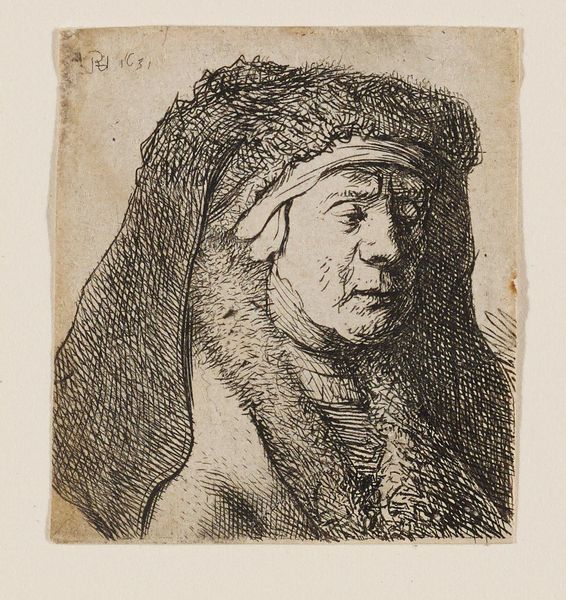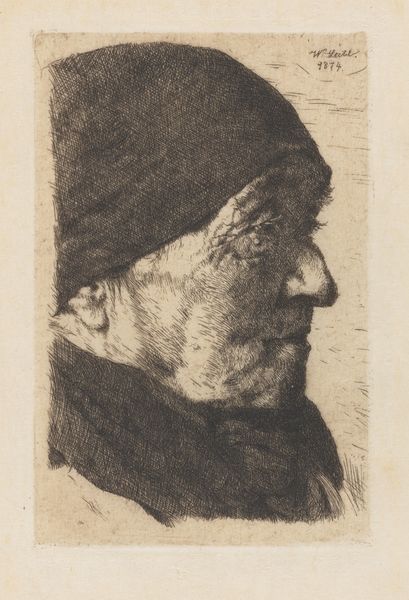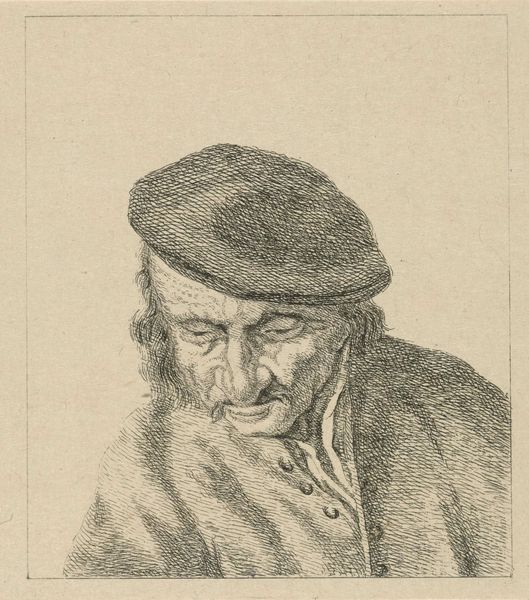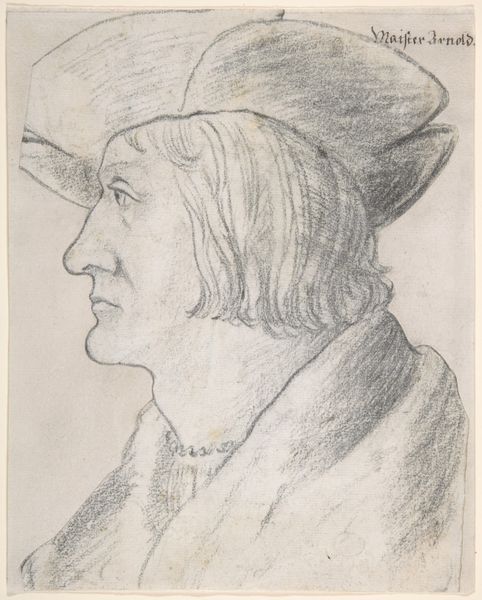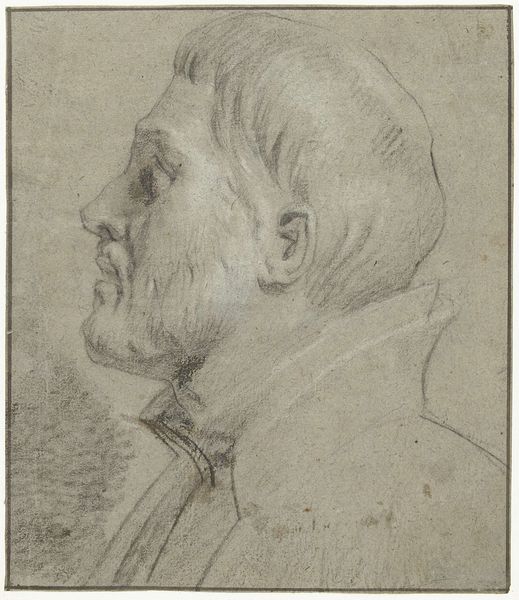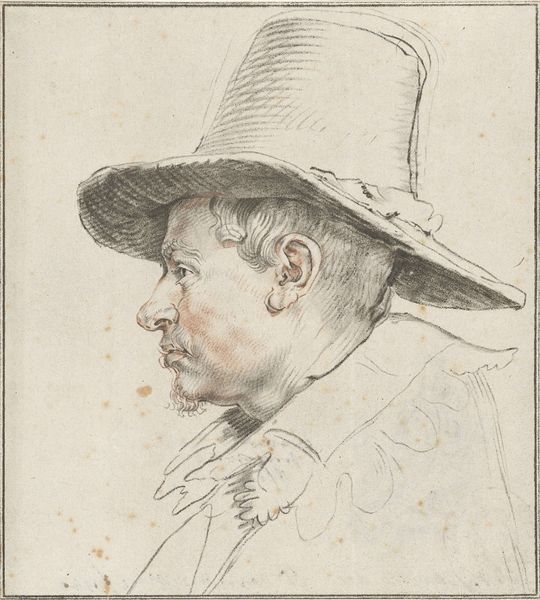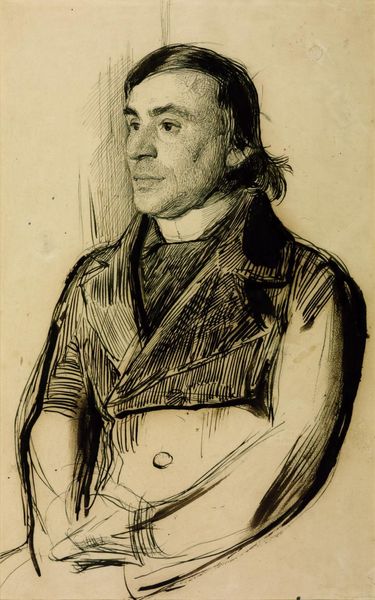
Portrait of the financier and merchant Jacob Fugger 1514 - 1515
0:00
0:00
drawing, charcoal
#
portrait
#
drawing
#
charcoal drawing
#
11_renaissance
#
portrait drawing
#
charcoal
#
history-painting
#
northern-renaissance
Dimensions: 134 mm (height) x 100 mm (width) (bladmaal)
Curator: This is a charcoal drawing from the early 16th century titled "Portrait of the financier and merchant Jacob Fugger." Editor: What strikes me immediately is the starkness of the rendering—the use of charcoal really emphasizes the textures, creating a tangible sense of depth and form. Curator: Absolutely. Understanding Fugger is understanding early capitalism. This portrait, created around 1514-1515, captures a man at the intersection of massive social and economic shifts. He essentially funded emperors. Editor: Observe the way the artist uses line and shadow to model the planes of his face—it's almost sculptural. The lines around the eyes and mouth tell a story of lived experience, resilience perhaps, or even the toll of power. Curator: His power was immense, but the impact of such financial control is often overlooked in social narratives. Consider how such powerful figures like Fugger, often obscured from our immediate view, profoundly affect(ed) the daily lives of so many across all societal stratifications, and not always equitably. His gaze holds an unwavering presence, challenging the viewer's own assumptions. Editor: I’m interested in that gaze, as well as the overall composition. The tight cropping forces us into an immediate and unavoidable engagement with the subject. Curator: It’s precisely that immediacy which the artist sought to instill: a recognition that these powerful figures, these titans of industry and commerce, have a hand, knowingly or unknowingly, in shaping not only history, but also human nature. The fact that such portraits survive should invite us to evaluate how this work remains culturally significant, to help evaluate society, power, and our assumptions about both. Editor: Ultimately, the artwork succeeds as both an aesthetic and historical artifact, as a revealing and unflinching testament to this man’s singular power. It demands that viewers grapple with its content, and, in so doing, invites a reckoning with our understanding of art history itself.
Comments
No comments
Be the first to comment and join the conversation on the ultimate creative platform.


